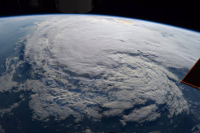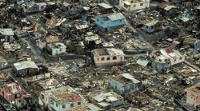|
Warmer Weather Supercharged 2017 Hurricanes, Study Finds
September 27, 2018
The historically disastrous 2017 hurricane season is a harbinger of things to come because of unusually warm ocean water, a new study asserts. The study, done by the National Oceanic Atmospheric Administration (NOAA) and Princeton University's Geophysical Fluid Dynamics Laboratory, found that in the last year formed six major hurricanes, twice the recent average, and that a large part of the reason for that increase was an unusually warm overall ocean temperature. Measurements during the six-month period known as "hurricane season" in the U.S. found that the average temperature of the Atlantic Ocean was 0.7 degrees Fahrenheit warmer than normal and, further, warmer than Earth's other oceans. That warm air rose into the sky above the Atlantic, creating conditions for storms that were more supercharged than normal. The presence of a La Niña was a factor but not the only factor, the study said. Further, the study asserted, the average number of hurricanes a year could soar to eight by 2080. The warmer-than-normal ocean temperatures were part of an overall trend of global warming, the scientists said, reiterating that the vast majority of the accumulating heat gets absorbed into Earth's water. Overall, the hurricanes in 2017 killed more than 3,000 people and caused an estimated $282 billion in damages. The three largest hurricanes–Harvey, Irma, and Maria–caused nearly all of those deaths and nearly all of that damage. The study, which employed sophisticated computer models to isolate competing factors, was published in the journal Science. |
Social Studies for Kids |
Social Studies for Kids
copyright 2002–2019
David White






